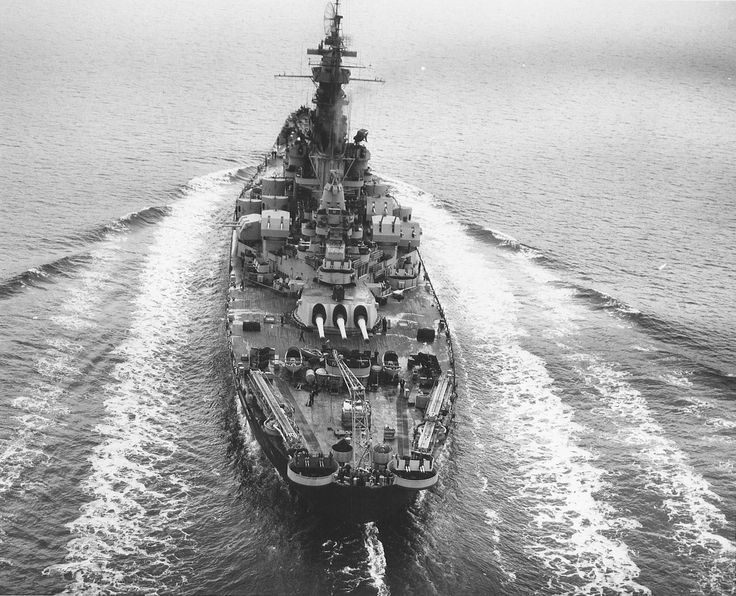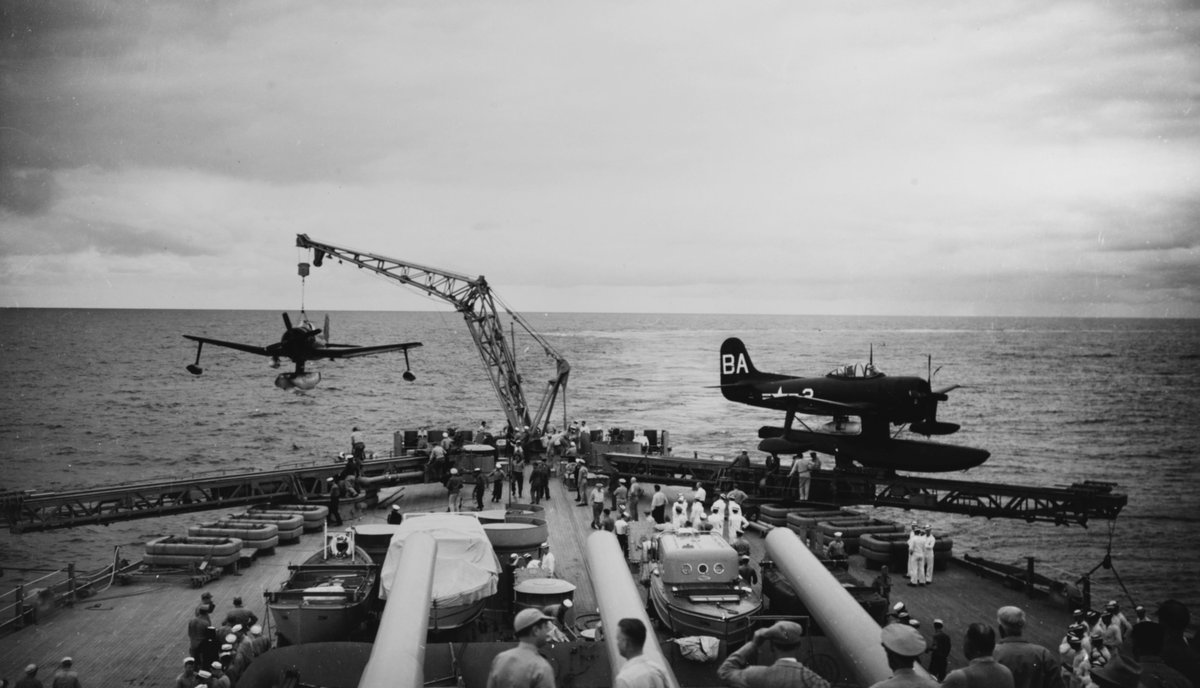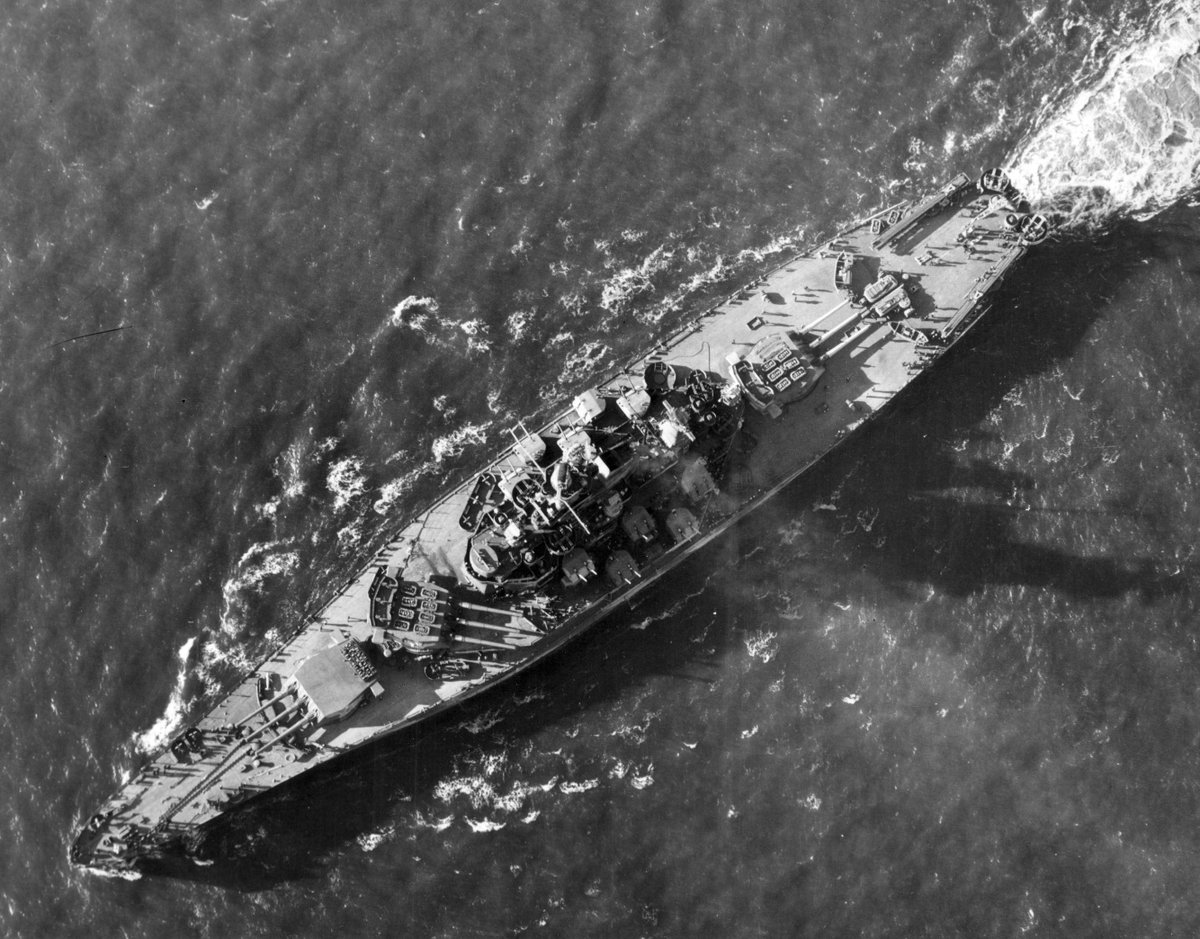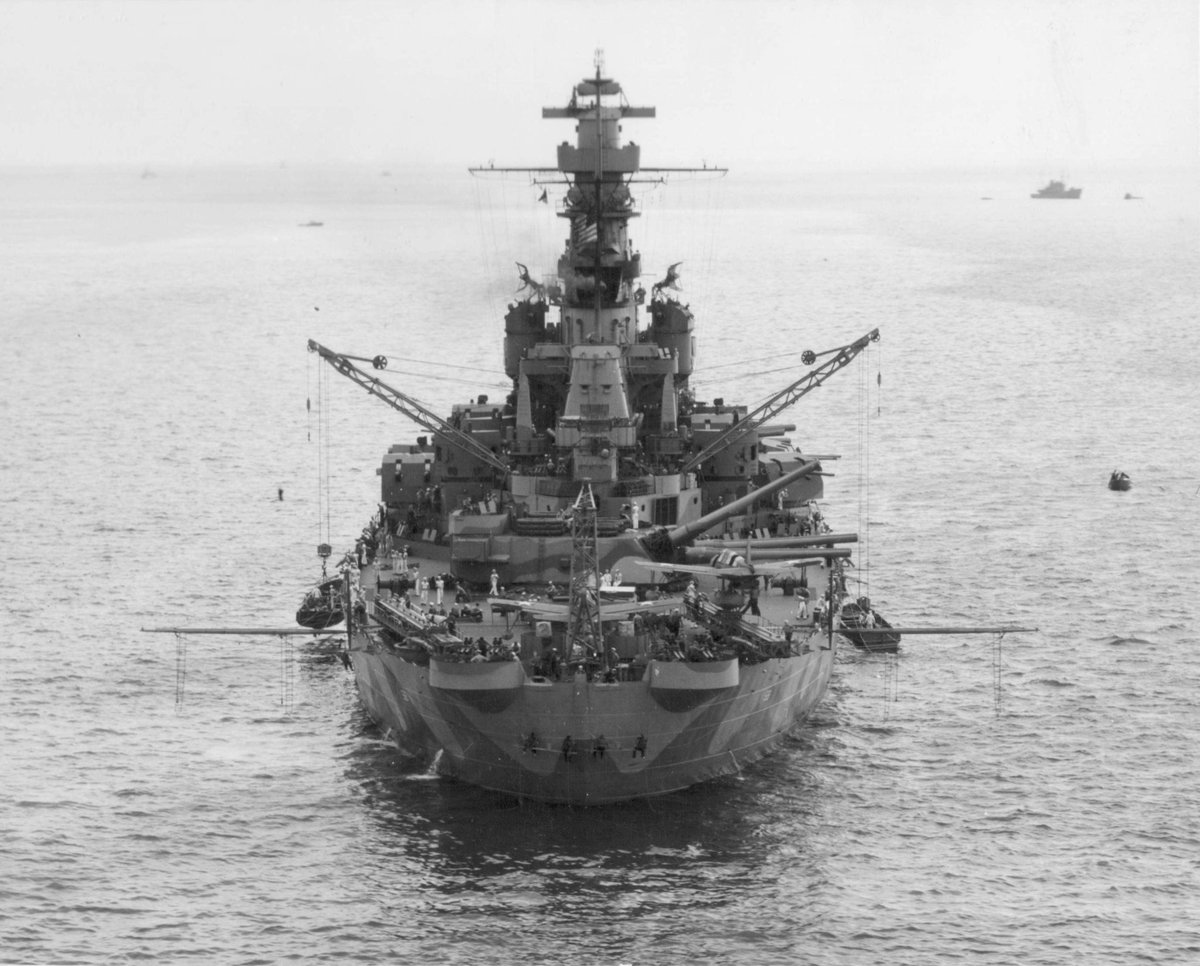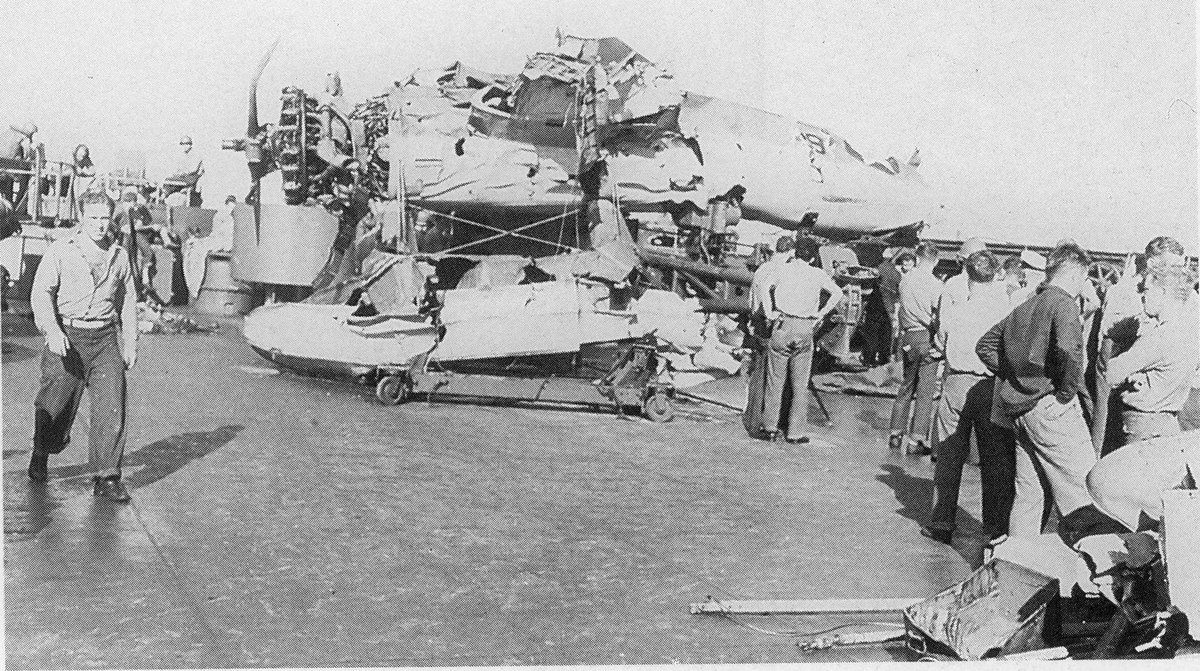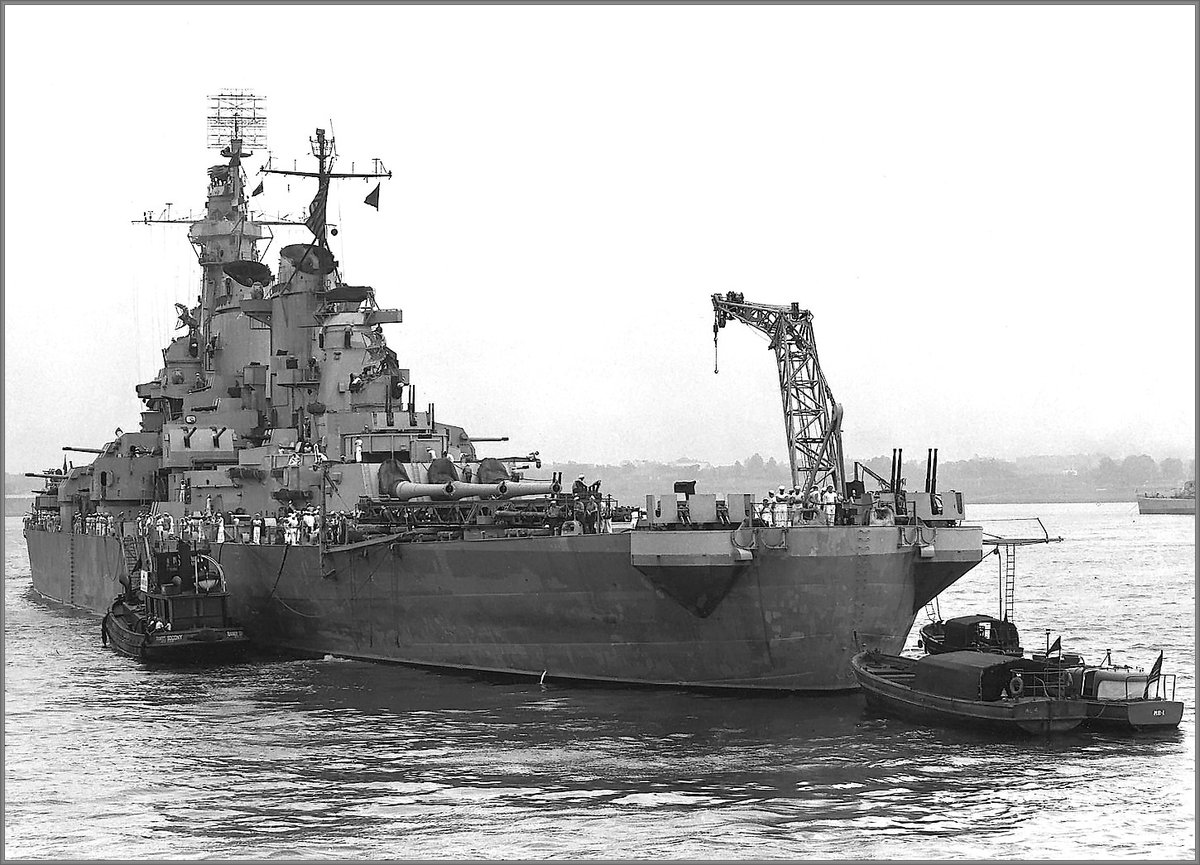The battleships of the United States Navy were notable for their aircraft accommodations. The modern battleships of Germany and Britain had large hangars and amidship& #39;s catapults. In comparison, the US left their aircraft at the extern stern, exposed on their catapults.
This was not done for lack of design experience or a disregard for the protection of aircraft in a harsh saltwater environment.
The reason was actually pretty simple and straightforward.
The reason was actually pretty simple and straightforward.
The United States acknowledged that aircraft stowed amidships were better protected from the elements. In addition, having the stern free permitted a better field of fire for the aft turrets.
However, they did not like the idea of having flammable aircraft along with their even more flammable fuel located in the middle of the ship. In the event of a fire, it could potentially prevent the crew from moving from one section of the ship to another.
With the aircraft carried at the stern, any potential fire would be localized there, as far away from the rest of the ship as possible.
While this did interfere with the firing arcs of the aft turret, this was seen as an acceptable trade.
While this did interfere with the firing arcs of the aft turret, this was seen as an acceptable trade.
If the situation called for it, the turret would fire despite the aircraft on the stern. The remains of the Kingfisher seen here is all that& #39;s left aboard USS South Dakota after the Second Naval Battle of Guadalcanal. The other two were thrown overboard by the muzzle blast.
Perhaps not the prettiest look for a dreadnought, but it was effective. A simple solution for an important problem.
#History #USNavy #WW2 #tuesdaymotivations #TuesdayTrivia #Warship #Navy
#History #USNavy #WW2 #tuesdaymotivations #TuesdayTrivia #Warship #Navy

 Read on Twitter
Read on Twitter